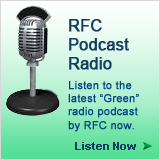It may not be the first thing on your mind when you wake up in the morning, but lets take a second to think about the amount of paper that is being used everyday. OK, time is up. Hopefully you came to the same conclusion that I did and that is there is a lot of paper that is being used everyday. Obviously that is the case whether it is news papers, magazines, product packaging or even toilet paper. So what is the big deal? Well as I am sure all of you know paper comes from trees and with the overwhelming use of it, deforestation has become a growing concern for us and our environment. I know, I know, but we need paper it is a commodity for everyday life. Of course we need paper, but that doesn’t mean there are not any alternative sources which can help prevent deforestation.
I am willing to bet when we took that second to think about the amount of paper being used, that blue prints were not something that jumped out. Truth be told, blueprints account for an overwhelming use of paper. In fact 42,000 trees are killed each year just to print off blueprints. That is enough paper if laid end to end to form a road from Washington D.C. to New York.
Even before construction can begin on a site, blueprints will be printed and reprinted by architects, project managers, building owners, and engineers as they make alterations to the plans. A local reprographic shop can get a request of 35 prints a day from this crowd, which is low compared to the 80 prints a day that were requested before the economic downfall. For a single request a shop may be asked to print one or up to 300 blueprints, depending on the size of the project. Meaning on the low end, a shop could print off 12,600 blueprints a year.
Just to avoid confusion, reprography is the practice of copying and reproducing documents and graphic material. In the United States alone this is a 3,000 company industry all heavily relying on blueprints. With that in mind, assuming every reprographic shop prints off 12,600 blueprints a year that would make an industry total of 37,800,000 blueprints every year.
That is a whole lot of trees being cut down, so what is the solution? Software Advice believes that all blueprints should go paperless and be replaces with onscreen takeoff software. Contractors can view plans, measure length and volumes, and markup plans all right on the computer screen. Not only this but with the software the blueprints become electronic allowing them to be e-mailed to various people without ever having to print.
Take the blueprint software and integrate it with construction cost estimated software, the construction business will not only cut down on the amount of paper but also have more accurate data. The software will also provide accurate material and labor pricing for the region you are working in. The software then allows the contractor to determine the cost of a job and be able to accurately bid on the project. With the removal of miscalculations contractors will avoid under or over bidding on a project, which is the key to job profitability.
The software provided by Software Advice can revolutionize the construction industry both environmentally and economically. If implemented cost estimating software can replace blueprint printing services, which could save up to 42,000 trees a year from being cut down. Also, with more accurate data and estimates contractors will save revenue and be able to land more projects. With software like this the construction business could go paperless. Saving trees from being cut down might not be enough to persuade contractors to use software instead of blueprints. It is going have to make dollar sense for most contractors to actually take notice. Incentives are going have to be implemented for contractors to change their old habits.
On one level a federal incentive could be put in place, much like how the government is handing out incentives for doctors to make the switch from paper charts to electronic medical records, there could be the same type of program for contractors to go from blueprints to software. The US Green Building Council could create a LEED credit for using software instead of blueprints. Also, there needs to be incentives for the 3,000 companies to make the switch to software.
The fact is that the reprography industry uses an overwhelming amount of paper, which leads to deforestation. Software Advice has attacked that problem and not only has a way to solve the problem, but perhaps found a better solution. Eventually, if contractors make the switch over to software the whole entire construction industry could go paperless.
Tags: deforestation



what an idea…really you have arisen a good point that should be consider before we lost everything..and also your solution if noteworthy……great post..